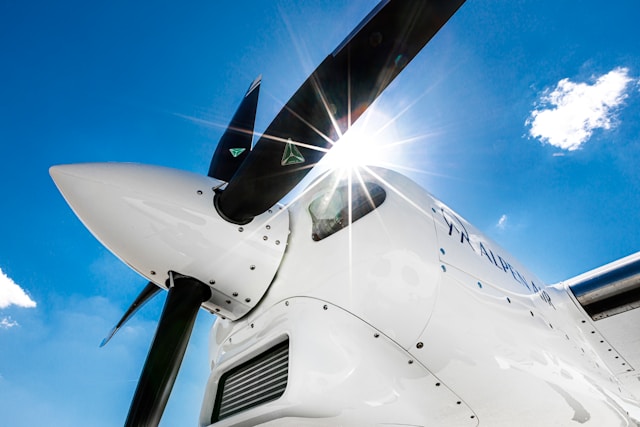OrigSmart


Predictive Maintenance
The Next Step in the Industrial Revolution
 Modern industrial environments present manufacturers and service providers with increasingly complex and rapidly changing challenges. The unprecedented pace of technological development, intensifying global competition, and growing demand for reliability are giving rise to new approaches, particularly in the field of equipment operation and maintenance.
Modern industrial environments present manufacturers and service providers with increasingly complex and rapidly changing challenges. The unprecedented pace of technological development, intensifying global competition, and growing demand for reliability are giving rise to new approaches, particularly in the field of equipment operation and maintenance.
History of Maintenance
In the past, companies typically only intervened with equipment when it had already failed - this reactive maintenance practice was the accepted norm for a long time. However, over time it became clear that this approach was not only costly but also risky: unexpected failures resulted in downtime, lost production, and significant financial losses.
Moving one step forward, preventive maintenance became the next logical stage, involving regular scheduled inspections and part replacements. While this was already a more planned approach, it often led to unnecessary interventions when equipment was still functioning perfectly. Condition-based maintenance represented further progress by collecting real-time data about equipment operation and only recommending intervention when parameters deviated from normal. However, even this method couldn't predict when a failure would occur, only reflecting the current state. From here, only one step separated industry from a true breakthrough: predictive maintenance.
Predictive Maintenance
The essence of predictive maintenance is drawing conclusions from available data - sometimes going back years - using advanced algorithms to predict when and why specific equipment will fail. This approach fundamentally differs from previous methods as it doesn't react to problems occurring but seeks to prevent them. This is made possible by machine learning, IoT technologies, big data analysis, and automated software systems. Implementing such a system involves multiple steps: initially, critical equipment is equipped with sensors that continuously measure parameters like temperature, vibrations, pressure, or even lubricant quality. These are complemented by operational data such as startup/shutdown counts or energy consumption, plus maintenance history that provides important patterns for the algorithms.
However, data collection is just the beginning. To generate truly valuable information from this data, serious analysis is required. Raw data must first be filtered for errors, normalized, and have relevant features extracted that machine learning models can work with. Predictive systems often employ multiple algorithms in parallel: regression models help estimate remaining time until equipment failure, while classification models attempt to predict potential failure types. Deep learning technologies - such as neural networks - are particularly adept at recognizing complex patterns that would be nearly impossible to detect with the human eye.
When the model has enough data to make reliable predictions, the system can automatically send alerts to maintenance personnel before failures actually occur. This enables precise timing of interventions, advance procurement of parts, and proper scheduling of specialists. This not only helps optimize costs but also minimizes production losses, as maintenance can be scheduled during non-critical periods.
The benefits of predictive maintenance extend far beyond financial savings. In industrial environments, reliability is a key factor. An unexpected failure not only costs money but also impacts other parts of the supply chain - especially in just-in-time manufacturing or tight-deadline deliveries. Predictive maintenance can prevent the most critical shutdowns, improve product quality, reduce waste quantities, and increase customer satisfaction. Furthermore, safety improves: predicted equipment failures allow accident prevention, particularly in sectors where human lives may depend on system reliability.
The technology's application isn't limited to any single industry. Beyond manufacturing, energy, logistics, utilities, and even healthcare actively use predictive models. Siemens, for example, collects data from thousands of gas turbines and can predict potential failures two weeks in advance, while Deutsche Bahn continuously monitors railway infrastructure elements to reduce delays. At Ford's car factories, assembly line operations are analyzed in real time, significantly reducing downtime.
Implementation Steps
However, implementing such a system doesn't happen overnight. Numerous challenges must be addressed: ensuring data quality, integrating existing systems, developing appropriate models, and acquiring necessary expertise all represent significant tasks. Additionally, organizational challenges shouldn't be forgotten. Implementing new technology always involves change: new job roles, new processes, and new ways of thinking become necessary. Financially, initial investments are often substantial, even when long-term returns are clearly demonstrable.
For successful implementation, a step-by-step approach is advisable. First, current practices should be assessed, identifying critical equipment and areas with the highest return potential. Subsequently, a well-defined pilot project can test the system before expanding its scope based on results. After installing sensors, establishing communication networks, and creating data collection infrastructure, predictive models can be developed and integrated into existing maintenance processes. Even after implementation, the system requires ongoing attention: model maintenance, ensuring data quality, and leveraging development opportunities are all part of long-term success.
The future holds further possibilities. With AI advancements, increasingly precise and autonomous systems are emerging that can independently optimize maintenance strategies. AR and VR technologies open new dimensions in visualizing and training maintenance processes, while blockchain makes maintenance data more transparent and shareable. Autonomous systems, self-repairing equipment, and maintenance robots no longer belong to science fiction but are becoming reality.
Summary
Predictive maintenance is therefore not just new technology but a complete paradigm shift in industry. An approach that centers on data and proactively seeks to prevent problems rather than address them after the fact. This transformation not only increases productivity but will become a fundamental requirement for competitiveness in future industry. As the world progresses along the path of digitalization, predictive maintenance naturally becomes the next step in the industrial revolution.
Zoltán Vashegyi
04.10.2025.